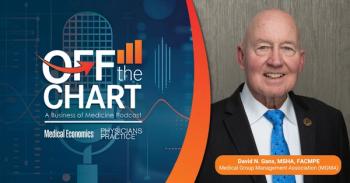
How to Keep Medical Practice Staff Morale High During Tough Times
Here's your guide to keep staff morale and productivity high despite stagnant salaries, reduced benefits, and added responsibilities.
As cash-strapped practices across the country face declining reimbursements and increasing operating costs, something's got to give. Unfortunately for many medical practice staff, that something is their salaries.
"I think there's no question that declining reimbursement has a negative effect on our financial condition," says Delia Meek, a practice manager at a seven-physician hospital-owned clinic in Coshocton, Ohio, which has struggled to give its 23 staff members pay increases since 2008. "I try to think of ways to motivate my staff because I know that I can't give them a raise."
The results of Physicians Practice's 2013 Staff Salary Survey indicate that such challenges are becoming commonplace. A significant number of respondents say they have cut or frozen staff salaries and/or reduced benefits. Making matters worse, as practices struggle financially, many are asking staff members to shoulder more responsibilities. "With patient volumes constantly increasing, I think both the providers and the employees have stepped up to do more - to do whatever they have to do," says Meek.
While stagnant salaries and added responsibilities could be a recipe for high employee turnover and poor job satisfaction, that's not the case at Meek's practice. She has not lost any employees due to salary-related issues. In fact, she says, her staff is working harder than ever. "They strive every day to efficiently utilize our organization's resources in order to keep going."
To help your practice foster such a productive and positive staff despite the financial pressures you face, we asked Meek, other medical practice leaders, and consultants to weigh in. Here are some surefire ways they said practices can keep morale and productivity high during tough times.
* Are your staff salaries in line with your peers?
Troubling trends
The results of our 2013 Staff Salary Survey indicate just how many practices are struggling to fairly compensate staff members. A third of the nearly 1,000 respondents said they have cut or frozen salaries at their practices in the past five years. In addition, a majority said they have no plans to give raises in 2013. Of that group, two-thirds cited declining reimbursements as the reason.
"Pretty much everybody in healthcare is fighting the continuing battles of expenses rising and reimbursements getting lower," says Mary Pat Whaley, a practice administrator for more than 25 years and founder of Manage My Practice, a consulting firm in Durham, N.C. "One of the biggest expenses that a medical practice has is their staff, and for most practices, they're just really not able to offer any increases to their staff." Worse, Whaley says this is not a new trend. Staff salaries have remained relatively "stagnant" the past two to three years at most practices.
And it's more than just thin paychecks that are hurting employees. Benefits have followed the same trajectory. In each of the last three years, about a fifth of practices said they had reduced benefits in the previous five years.
When specific benefits are considered, the trends are even more troubling. In 2010, 97 percent of respondents said they offered staff members paid vacation or paid sick time. This year that dropped to 86 percent of respondents. Also in 2010, 70 percent of respondents said they offered retirement plan matching; this year only 51 percent said they do.
In addition, more practices are asking employees to pay a portion of their health insurance, says Judy Bee, a principal at Practice Performance Group, a management consulting firm in La Jolla, Calif. "That used to be a very rare thing, but boy it's getting far more common because of what's happening with the rates."
Stretched-skinny
The news for staff members is slightly more positive when job retention is considered. Most practices simply can't afford to lose any staff members because they "got down to the skinny" on staffing a few years ago, says Whaley. In fact, 63 percent of our survey respondents said they have either reduced staff or kept the same number of staff in the past five years, while only 37 percent said they have added staff. "Unless you're a practice of a good size or a hospital-owned practice, there's no real extra there" when it comes to staffing, says Whaley.
Since practices are operating with fewer staff members, each employee has more responsibilities. "It's much, much leaner since reimbursements are down, and there's no leftover capacity to cover people who are sick," says family physician Robert Gwinn, who works with Meek at Coshocton Clinic. "There's very little capacity to start new programs, new things, new ideas, you're just so stuck trying to survive and there's no latitude for trying something different or trying something new."
Things get even more problematic for staff members when one of their colleagues decides to leave the practice, says Whaley. Most practices "try and limp along as they can until the staff really starts dropping in the halls before they refill a position."
Rising responsibilities
But rising staff workloads are due to more than just downsizing. The amount of work practices need to accomplish each day has increased, says consultant Elizabeth Woodcock. "During this 24- to 36-month period, where we've seen this [downward] trend related to staff salaries, and in some markets longer than that, the amount of work that has to be done has gone up significantly, and I think that's where the real challenge for practices is."
Practices have to make up the revenue they're losing in reimbursement reductions by increasing volume. "In order to sustain the profitability of a practice, practices truly, just simply put, have to see more patients," Woodcock says.
Moreover, as many practices transition from paper to EHR systems, staffers face new tasks, says Whaley, pointing to medical assistants as an example. "In most places, physicians just cannot get through their day seeing all the patients that they want to see and get all the documentation done, and so it's not unusual for nurses and medical assistants to come into the exam rooms with [doctors] and do the documentation on the computer while the physician provides care," she says. "They're getting up to their armpits in the [EHR] and functioning much more on a documentation level."
Instead of increases
While employees are taking on more responsibilities, it's clear from our survey results that most are not receiving salary increases for that added work. As a result, it's crucial for practices to find new ways to reward them. Here are a few ideas:
1. Bonus right. If possible, provide small monetary awards to staff members who go above and beyond, says Bee - for example, if someone leads a successful EHR transition or picks up the slack while a colleague is on maternity leave.
Be sure to use bonuses to fuel positive change by being specific about what you'll pay for, says Whaley. Establish policies that say a bonus will be paid to employees if particular, measurable goals are met.
2. Provide PTO. As an alternative to a monetary bonus, reward exceptional staff members with paid time off - but do it on your own terms. Specify when they can use the PTO, such as when a doctor or nurse practitioner is out of the office and workload drops, says Bee. "It doesn't raise the bill and it doesn't hurt the production if you're careful about when you grant those days off."
3. Bend the rules. If you want to provide an exceptional employee a longer-lasting incentive, offer some flexibility, says Whaley. "Work is so intense, life is so intense, that giving somebody the option of working at home one day a week, or every other week, or changing the schedule maybe during the summer ... that kind of thing - that's huge."
Long-Term Lessons
While incentives like the ones noted above can boost staff morale, they are often short-term motivators. The most effective way to boost staff morale - and keep it up for the long term - is by providing a great work environment and ensuring staff members have high job satisfaction. Here's how:
1. Face the music. Be upfront with staff about your financial challenges, says Meek. "People need to know what's going on, and I think that you get more from your employees if you're honest and you communicate with them," she says. "They will give you more because I think everybody wants the same thing, we're all reaching for the same goal: to succeed financially and with patient care."
2. Engage in the solution. Make it clear that staff input is key to meeting financial challenges, says Charlene Mooney, a practice consultant with the Halley Consulting Group in Columbus, Ohio. When she consults with practices, she asks every staff member to share their challenges and improvement ideas with her. "Nine times out of 10, they're the ones [who] have the best ideas because they're the ones on the front lines doing the work every day," she says.
3. Grow as a team. Make sure physicians and leadership make it clear that they respect staff and listen to their opinions, says Gwinn. "You can't look at the practice from being a top-down thing - you've got to respect each individual working there, and each individual has to feel like they're part of the whole mission of the practice." That includes listening to staff member input and insight, and if what they've said or done makes a difference, letting them know, he says.
4. Encourage professional development. Offer employees opportunities to attend career-related conferences, such as those focused on time management or patient relations, says Mooney, noting that this is an inexpensive way to reenergize staff members and help them keep their skills polished.
5. Share good news. Don't let employees lose their sense of purpose, says Woodcock. "If you get a letter from a patient that says, 'You really changed my life,' share that at a staff meeting." Also, put an "identify a star" box in your practice to provide patients the opportunity to share praise.
6. Acknowledge service. Celebrate milestones such as birthdays and years of employment, says Mooney. "It's not [about] how much can you pay me, or even sometimes how many benefits you can give me. It's, how do you make me feel when I come in every day and when I walk out. Do I feel like I made a difference?" she says. "A simple form of appreciation, recognition, can go a long way to making people feel important and appreciated."
Emerging staffing roles
As the shift from traditional fee-for-service to value-based reimbursement gains momentum, many practices are adding staff members such as patient navigators and care coordinators to their teams. In fact, according to our 2013 Staff Salary Survey, one out of every five practices is employing some type of care coordinator.
Often these individuals are registered nurses who focus on tasks such as helping navigate the healthcare continuum and increasing patient outreach and monitoring.
"Having a care coordinator onsite doing outreach to the patient increases primary-care utilization, which allows us to have better understanding and control of blood work outcomes, medication management, and specialist referrals," says nurse Janet Duni, a population care coordinator at Vanguard Medical Group in Verona, N.J. "Those three things really influence the level to which a patient is engaged, and how their disease process is monitored and the outcomes of their disease processes." Duni adds that having care coordination onsite at her practice has decreased its patients' emergency department use and inpatient stays. For more on care coordinators and what Duni's role entails visit
PAs no longer 'an experiment'
About 25 percent of our 2013 Staff Salary Survey respondents said they employ a physician assistant (PA) at their practices. That percentage is likely to grow in the coming years, says Mary Barber, senior executive vice president of marketing at Cejka Search. In fact, a 2012 survey by the physician and advanced practitioner recruiting organization found that 63 percent of medical groups plan to hire more physician assistants this year.
Ann Davis, a nonpracticing PA in Grass Valley, Calif., says that practices are not only adding PAs to their ranks, they are also utilizing them "more to their full abilities." "We're not an experiment anymore," says Davis, who is the senior director of state advocacy and outreach at the American Academy of Physician Assistants. "It's pretty common that folks are understanding all of the benefits in the patient care and the high-acuity care that PAs can provide - the future's very bright for the profession."
For more on how the PA role is changing, visit
* Are your staff salaries in line with your peers?
In Summary
Due to declining reimbursements, many practices are freezing staff salaries, reducing benefits, and asking staff to do more. Here's how to foster a positive practice environment despite these challenges:
• Provide monetary bonuses, paid time off, and/or flexible scheduling to staff members who demonstrate exceptional performance.
• Be open about the financial challenges your practice faces and make it clear that staffers are part of the solution.
• Share praise, acknowledge service, and say thank you to staff members regularly.
Aubrey Westgate is an associate editor at Physicians Practice. She can be reached at
This article originally appeared in the May 2013 issue of Physicians Practice.
Newsletter
Optimize your practice with the Physicians Practice newsletter, offering management pearls, leadership tips, and business strategies tailored for practice administrators and physicians of any specialty.











